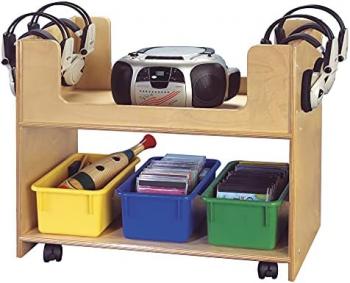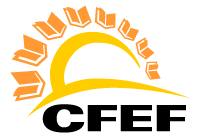
FIND IT FUND IT FLORIDA
Immersive Literacy Hub

- School:
- Hilliard Elementary
- Subject:
- Special Needs Students
- Teacher:
- Jennifer Gaus
- Students Impacted:
- 7
- Grade:
- K-5
- Date:
- March 15, 2024
0% Funded
Only $810.65 Needed
Goal
Establishing a Multisensory Literacy Hub to support IEP Reading goals by providing a variety of tools and techniques that cater to diverse learning styles and accommodate individual needs.
What will be done with my students
In addition to independent reading practice, the literacy hub would be used to conduct interactive read-aloud sessions where visual aids will be incorporated to help develop listening comprehension. This will enable me to provide my students with additional opportunities to read text at their instructional level in small groups, allow for sensory exploration with the use of sensory bins filled with textured materials related to the text, and offer audio recordings of nature sounds, enhancing their engagement and stimulating multiple senses to support learning in their unique way. A literacy hub will assist me in differentiating instruction based on students' individual needs, interests, and learning styles. I will customize activities, providing varied levels of support, accommodating diverse learners, and ensure that all students have access to a meaningful and engaging literacy experience.
Benefits to my students
A multisensory Literacy Hub provides many benefits to students, particularly students who have difficulty with fluency and comprehension. The benefits these students will receive from having access to the Literacy Hub will also help to support their IEP goals in the following areas:
Auditory Support: Utilizing text-to-speech technology or audiobooks within the literacy hub enables students with accommodations for text read aloud to engage with the material through auditory channels. Hearing the text read aloud can help students strengthen their decoding skills, improve pronunciation, and enhance comprehension by reinforcing vocabulary and sentence structure.
Visual Reinforcement: Incorporating visual aids such as interactive whiteboards or visual schedules in the literacy hub can reinforce reading concepts and help students with special needs better understand the material. Visual supports can include images, charts, and diagrams that supplement the text, making it more accessible and reinforcing key concepts.
Hands-On Learning Activities: Integrating hands-on learning activities like interactive games, tactile materials, and manipulatives in the literacy hub engages students in kinesthetic learning, which can be particularly beneficial for students with special needs. These activities help reinforce reading skills in a dynamic and interactive way, improving retention and fluency.
Differentiated Instruction: The literacy hub allows for personalized and differentiated instruction tailored to each student's unique learning profile. A variety of instructional strategies, materials, and resources available in the hub to address individual needs and learning preferences, ensures that every student receives the support they need to improve fluency and comprehension.
Sensory Integration: By incorporating elements that engage multiple senses such as sound, sight, and touch, the literacy hub promotes sensory integration, which is crucial for students with special needs. Engaging multiple senses while learning helps students make meaningful connections and enhances their overall understanding of the material, leading to improved fluency and comprehension.
Overall, a multisensory literacy hub provides a supportive and inclusive learning environment where students with special needs can access diverse resources, receive targeted instruction, and engage in interactive learning activities that cater to their individual strengths and challenges. By leveraging a variety of sensory modalities and instructional approaches, the literacy hub helps students make significant progress towards their IEP reading goals, ultimately improving both fluency and comprehension.
Budget Narrative
I already have the listening center CD player. Many of my students have unique abilities that prohibit them from sitting still, and some have sensory needs where they put things in their mouth so the Bluetooth headphones will last longer than those that have to be plugged in. By storing the CD player, the headphones and the books being used for the week on the mobile audio station, they will likely last longer and be free from damage. The book sets are needed to get the classroom audio book center started. I will be adding to it throughout the year to increase the available materials.
Items
| # | Item | Cost |
|---|---|---|
| 1 | Bluetooth Headphones x6 | $155.94 |
| 2 | Childcraft 1301528 Mobile Audio Station with 2 Shelves and Casters, 25 Pounds, Birch Veneer, UV Acrylic, 27-3/4 x 14-3/4 x 23-3/4, Natural Wood Tone | $303.97 |
| 3 | Kaplan Early Learning Dr. Seuss Book and CD Set - Set of 6 | $69.95 |
| 4 | Kaplan Early Learning Read Aloud Books and CDs - Set of 6 Classic Children's Books | $65.95 |
| 5 | Kaplan Early Learning Classic Stories Book and CD - Set of 8 | $84.95 |
| 6 | Kaplan Early Learning Read-Aloud Books and CDs - Set of 4 Colorful Children's Books | $47.95 |
| 7 | Kaplan Early Learning How Do Dinosaurs Book and CD - Set of 3 | $36.95 |
| 8 | Really Good Stuff Store More Sturdy Hang-Up Totes Rack, 20”W x 12”D x 20"H – Tip and Scratch Resistant Base | $44.99 |
| Total: | $810.65 |
0% Funded
Only $810.65 Needed





Share
Please share this page to help in fulfilling this grant.
Email to a Friend